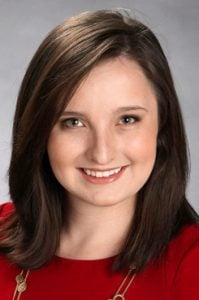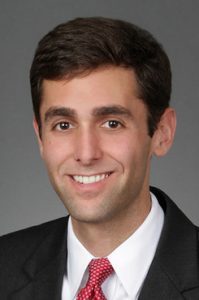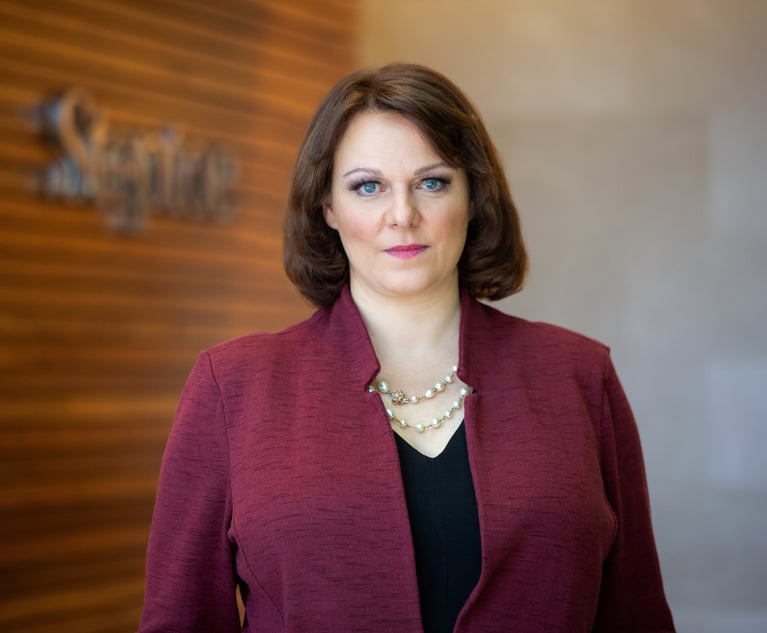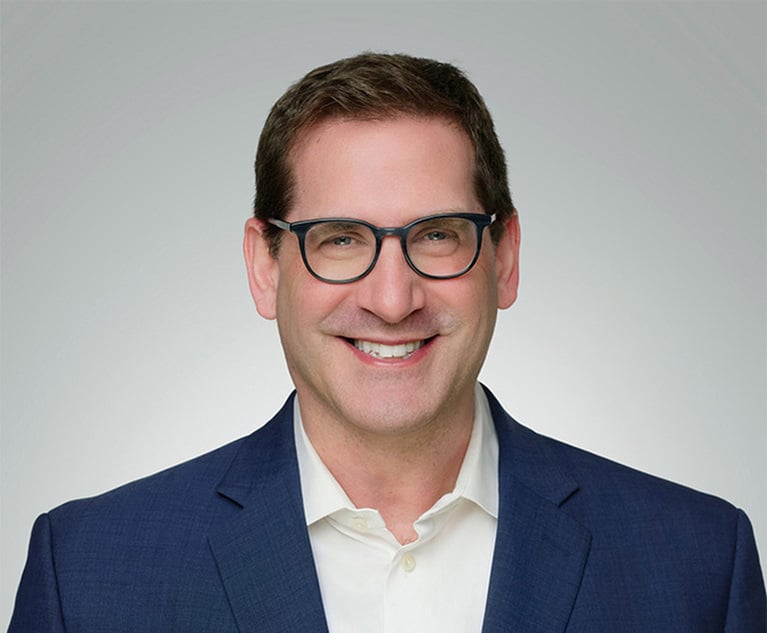The Boomerang Effect: You Can Go Home Again
In highly competitive markets with intense lateral movement, it is not unusual to see lawyers move from one law firm to another, only to return to their former firm after a few years.
December 06, 2018 at 03:34 PM
7 minute read

Richard Frye, an attorney who specializes in private equity work, practiced at Weil, Gotshal & Manges for 10 years before leaving for Winston & Strawn in March of 2017. This month, Frye rejoined Weil—an example of the growing frequency of the boomerang effect occurring in the legal world.
The phenomenon of attorneys leaving and later returning to their former firm is not exactly new. Lawyers have long been known to move in-house or take a government post for a few years and then go back to their former firm. But now, especially in highly competitive markets with intense lateral movement, it is not unusual to see lawyers move from one law firm to another, only to return to their former firm after a few years.
Kent Zimmermann, a law firm consultant with Zeughauser Group, said that with the current lateral market inflamed nationally by Am Law 200 firms opening branch offices all over the country, more lawyers will be enticed to move but in time will return to their former firm. And in places like Texas, where the competition for talent and has been intense, such boomerang activity could soar.
“The competitive environment to recruit is tighter in Texas than in many other geographic areas,” Zimmermann said. “And that may result in increased boomerang activity.”
There's No Place Like Home
 Mariah McGrogan
Mariah McGroganMariah McGrogan had been a labor and employment attorney with Reed Smith in Pittsburgh for two years when she left to join the employment firm Jackson Lewis in August 2016. She said she enjoyed her two years at Jackson Lewis and learned a great deal about employment issues and litigation.
But she had built some very strong mentoring relationships while at Reed Smith and missed the lawyers, she said. So, when Reed Smith had an opening for a labor and employment lawyer in its Pittsburgh office earlier this year, McGrogan said “it tugged on my heartstrings.” She called a friend at the firm, and very quickly was hired back.
Some lawyers wait much longer to go home again. In February, when the lateral market in Texas had gotten especially hot, Joe Wielebinski returned to Winstead as a partner in Dallas after spending 33 years at Munsch Hardt—a firm founded by a group of former Winstead lawyers in 1985.
Wielebinski, a bankruptcy lawyer, said it made sense for him to return to Winstead because of the depth of the firm's insolvency practice and financial institutions practice. He moved back with Walter Buchanan and Paul Seiler, who also boomeranged after 28 years at other firms. Wielebinski said multiple firms had approached him prior to his move, but nothing sounded interesting or worth pursuing until Winstead reached out.
“They really rolled out the red carpet,” Wielebinski said. ”It was a very comfortable feeling, coming home.”
Winstead also lost some lawyers this year as the boomerang phenomenon took hold in Texas. Four energy litigators who had joined Winstead from K&L Gates in 2011 returned to K&L Gates in March.
“There's something to coming back,” said Lisa Smith, a principal with legal consultant Fairfax Associates in Washington, D.C. “You know people and are comfortable. You don't have to prove yourself at every turn.”
Not all boomerangs move from law firm to law firm, of course. It's commonplace for lawyers to go into government service and then return to their former firm, Smith said. And lawyers frequently leave firms for in-house jobs and then return.
“It's so common. It's just the nature of the industry,” said Chris Batz, a legal recruiter and founder of the legal recruiting firm The Lion Group.
Everyone Benefits
When those lawyers do return, they not only have insights that can benefit their firm, but they also value the firm that much more.
“I gained a much better appreciation of the positive aspects of being in a law firm,” said William “Chip” Cavanaugh Jr., a Munsch Hardt Kopf & Harr partner in Dallas who returned to the firm after a stint as a principal in a private equity firm.
Some lawyers even try a few different positions before boomeranging to their former firms. In September, for example, M&A lawyer Christina Marshall returned to Haynes and Boone as a partner in Dallas after spending a few years as general counsel for a Dallas company and then managing her own small firm.
Marshall said she learned a lot about the client's perspective while working in-house and also about firm management as an owner of her firm. But when Haynes and Boone asked her to consider returning, she jumped at the chance.
Neal Rackleff left Locke Lord twice for government jobs—once as director of housing and community development for the city of Houston, and then as an assistant secretary for the U.S. Department of Housing and Urban Development. He returned to the firm both times.
Austin Lee, a partner at Bracewell in Houston, was a fifth-year associate when he left the firm in 2014 to take an in-house position at Newfield Exploration. He returned to Bracewell a year later. He missed the “pace and timeline” of a firm, he said. So he started talking to Bracewell about a potential return and the firm took him back.
But Lee was not Bracewell's first boomerang. Shortly after joining the firm as chief talent officer in 2017, Jennifer Queen looked at hiring data and noticed that a large number of lawyers who had left the firm had returned. In fact, she said that since 2015, 14 lawyers had boomeranged back to Bracewell.
According to Queen, the boomerang phenomenon is most common among associates, which she attributes that to the millennial factor. Those younger lawyers, now the industry's largest demographic, are more open to changing jobs, she said.
To Government and Back
Lawyers who leave a firm for government service are often highly sought-after when they  decide to return to firm practice. Kim Koopersmith, chair of Akin Gump Strauss Hauer & Feld, said it's a “wonderful thing” for a firm to have lawyers leave to take a job in government and then return.
decide to return to firm practice. Kim Koopersmith, chair of Akin Gump Strauss Hauer & Feld, said it's a “wonderful thing” for a firm to have lawyers leave to take a job in government and then return.
“From our point of view, it's a plus,” she said. “We are happy when people go forth and happy when people return.”
Robert Allen was an associate at Kirkland & Ellis in Washington, D.C., from 2011 through 2014, but left to become a prosecutor at the U.S. Attorney's Office for the Southern District of New York. He enjoyed being a prosecutor, but he said he knew he would one day return to private practice.
This year, he returned to Kirkland.
He never considered going anywhere else, he said.
Further Reading:
Oil and Gas Litigators Return to K&L Gates in Texas After Stint at Winstead
M&A Lawyer Back at Haynes and Boone After Stints as GC and at Small Firm
Private Equity Lawyer Returns to Weil After Winston & Strawn Stint
Lawyer Returns to Locke Lord After Leaving Top Job at HUD in DC
This content has been archived. It is available through our partners, LexisNexis® and Bloomberg Law.
To view this content, please continue to their sites.
Not a Lexis Subscriber?
Subscribe Now
Not a Bloomberg Law Subscriber?
Subscribe Now
NOT FOR REPRINT
© 2025 ALM Global, LLC, All Rights Reserved. Request academic re-use from www.copyright.com. All other uses, submit a request to [email protected]. For more information visit Asset & Logo Licensing.
You Might Like
View All

O'Melveny, White & Case, Skadden Beef Up in Texas With Energy, Real Estate Lateral Partner Hires
5 minute read
Arizona Supreme Court Presses Pause on KPMG's Bid to Deliver Legal Services
Trending Stories
- 1Considerations for Establishing or Denying a Texas Partnership to Invest in Real Estate
- 2In-House AI Adoption Stalls Despite Rising Business Pressures
- 3Texas Asks Trump DOJ to Reject Housing Enforcement
- 4Ideas We Should Borrow: A Legislative Wishlist for NJ Trusts and Estates
- 5Canadian Private Equity Firms Are Eyeing Tech Sector
Who Got The Work
J. Brugh Lower of Gibbons has entered an appearance for industrial equipment supplier Devco Corporation in a pending trademark infringement lawsuit. The suit, accusing the defendant of selling knock-off Graco products, was filed Dec. 18 in New Jersey District Court by Rivkin Radler on behalf of Graco Inc. and Graco Minnesota. The case, assigned to U.S. District Judge Zahid N. Quraishi, is 3:24-cv-11294, Graco Inc. et al v. Devco Corporation.
Who Got The Work
Rebecca Maller-Stein and Kent A. Yalowitz of Arnold & Porter Kaye Scholer have entered their appearances for Hanaco Venture Capital and its executives, Lior Prosor and David Frankel, in a pending securities lawsuit. The action, filed on Dec. 24 in New York Southern District Court by Zell, Aron & Co. on behalf of Goldeneye Advisors, accuses the defendants of negligently and fraudulently managing the plaintiff's $1 million investment. The case, assigned to U.S. District Judge Vernon S. Broderick, is 1:24-cv-09918, Goldeneye Advisors, LLC v. Hanaco Venture Capital, Ltd. et al.
Who Got The Work
Attorneys from A&O Shearman has stepped in as defense counsel for Toronto-Dominion Bank and other defendants in a pending securities class action. The suit, filed Dec. 11 in New York Southern District Court by Bleichmar Fonti & Auld, accuses the defendants of concealing the bank's 'pervasive' deficiencies in regards to its compliance with the Bank Secrecy Act and the quality of its anti-money laundering controls. The case, assigned to U.S. District Judge Arun Subramanian, is 1:24-cv-09445, Gonzalez v. The Toronto-Dominion Bank et al.
Who Got The Work
Crown Castle International, a Pennsylvania company providing shared communications infrastructure, has turned to Luke D. Wolf of Gordon Rees Scully Mansukhani to fend off a pending breach-of-contract lawsuit. The court action, filed Nov. 25 in Michigan Eastern District Court by Hooper Hathaway PC on behalf of The Town Residences LLC, accuses Crown Castle of failing to transfer approximately $30,000 in utility payments from T-Mobile in breach of a roof-top lease and assignment agreement. The case, assigned to U.S. District Judge Susan K. Declercq, is 2:24-cv-13131, The Town Residences LLC v. T-Mobile US, Inc. et al.
Who Got The Work
Wilfred P. Coronato and Daniel M. Schwartz of McCarter & English have stepped in as defense counsel to Electrolux Home Products Inc. in a pending product liability lawsuit. The court action, filed Nov. 26 in New York Eastern District Court by Poulos Lopiccolo PC and Nagel Rice LLP on behalf of David Stern, alleges that the defendant's refrigerators’ drawers and shelving repeatedly break and fall apart within months after purchase. The case, assigned to U.S. District Judge Joan M. Azrack, is 2:24-cv-08204, Stern v. Electrolux Home Products, Inc.
Featured Firms
Law Offices of Gary Martin Hays & Associates, P.C.
(470) 294-1674
Law Offices of Mark E. Salomone
(857) 444-6468
Smith & Hassler
(713) 739-1250











